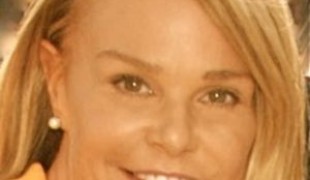- 7926
- 472
- 8
- 12
- 0
- Help Ukraine
About the solution
His letter went viral and eventually made its way to designer Tobie Hatfield, who had worked with Special Olympians and Paralympians on similar challenges. The two collaborated by phone and email for three years.
In his letter, he explained: ‘Cerebral palsy stiffens the muscles in the body. As a result I have flexibility in only one of my hands which makes it impossible for me to tie my shoes.’
Hatfield experimented with no-lace solutions such as Velcro, zippers, and cable dials. Eventually, he decided on a wraparound zipper. The zipper on the Flyease opens near the heel and is connected with a hook-and-loop strap. Wearers can peel open the shoe with one hand, making it easier for people like Walzer (and anybody, really) to slip their foot in and out. Cords running from the heel to the top of the shoe tighten as the shoe is zipped, adding support. The sneakers fixed Walzer’s shoe problem—and helped others in the process.
Matthew, who at that time was preparing to leave high school and head off to college, went on to explain his simple dream for the future, saying: ‘My dream is to go to the college of my choice without having to worry about someone coming to tie my shoes everyday.’
Adapted from: http://bit.ly/2gIu6VQ
More info: http://swoo.sh/1OCRuyo
https://www.youtube.com/watch?v=TaNM_T1d1as
这些解决方案不应包括使用药物,化学品或生物制品(包括食品);创伤性设备;冒犯性的,商业或内在危险的内容。该解决方案未经医学验证。请谨慎进行!如果您有任何疑问,请咨询健康专家。
DISCLAIMER: This story was written by someone who is not the author of the solution, therefore please be advised that, although it was written with the utmost respect for the innovation and the innovator, there can be some incorrect statements. If you find any errors please contact the patient Innovation team via info@patient-innovation.com
-
-
165
-
0
-
2854

Unhidden, the brand challenging fashion norms for people with disabilities
(SELF)-CARE: DRESSING: Dressing independently.
Body-Worn solutions (Clothing, accessories, shoes, sensors...)
Impaired movement
Difficulty coordinating movements
Promoting self-management
Promoting inclusivity and social integration
Raise awareness
Neurology
Orthopedics
Physical Medicine and Rehabilitation
Mobility issues
Solutions for Disabled people
United Kingdom
-
-
-
253
-
0
-
3044

Mom creates clothing line for autistics
(SELF)-CARE: DRESSING: Dressing independently.
Autism
Body-Worn solutions (Clothing, accessories, shoes, sensors...)
Anxiety
Difficulty concentrating or making decisions
Irritability or anger outbursts
Restlessness or feeling slowed down
Panic attacks
Difficulty controlling impulses
Racing thoughts
Feelings of guilt or worthlessness
Obsessive thoughts or compulsive behaviors
Hallucinations (perceiving things that aren't there)
Changes in appetite or weight
Promoting self-management
Managing Neurological Disorders
Promoting inclusivity and social integration
To improve Treatment/Therapy
Preventing (Vaccination, Protection, Falls, Research/Mapping)
Caregiving Support
Child and Adolescent Psychiatry
General and Family Medicine
Neurology
Pediatrics
United States
-
-
-
401
-
0
-
5419

Mother creates weighted cape to help her special needs daugther
CAREGIVING
Urban exploration
COMMUNICATION: Communicating, whether by speaking, listening, or other means
Post traumatic stress disorder (PTSD)
Anxiety
Body-Worn solutions (Clothing, accessories, shoes, sensors...)
Anxiety
Social withdrawal or isolation
Irritability or anger outbursts
Restlessness or feeling slowed down
Panic attacks
Racing thoughts
Feelings of guilt or worthlessness
Suicidal thoughts or behaviors
Obsessive thoughts or compulsive behaviors
Hallucinations (perceiving things that aren't there)
Sleep disturbances
Managing pain
Promoting self-management
Managing Neurological Disorders
Promoting inclusivity and social integration
Enhancing Mental Health
Improving Speech and Communication
To improve Treatment/Therapy
Preventing (Vaccination, Protection, Falls, Research/Mapping)
Raise awareness
Child and Adolescent Psychiatry
Neurology
Pediatrics
Physical Medicine and Rehabilitation
United States
-
 zh
zh